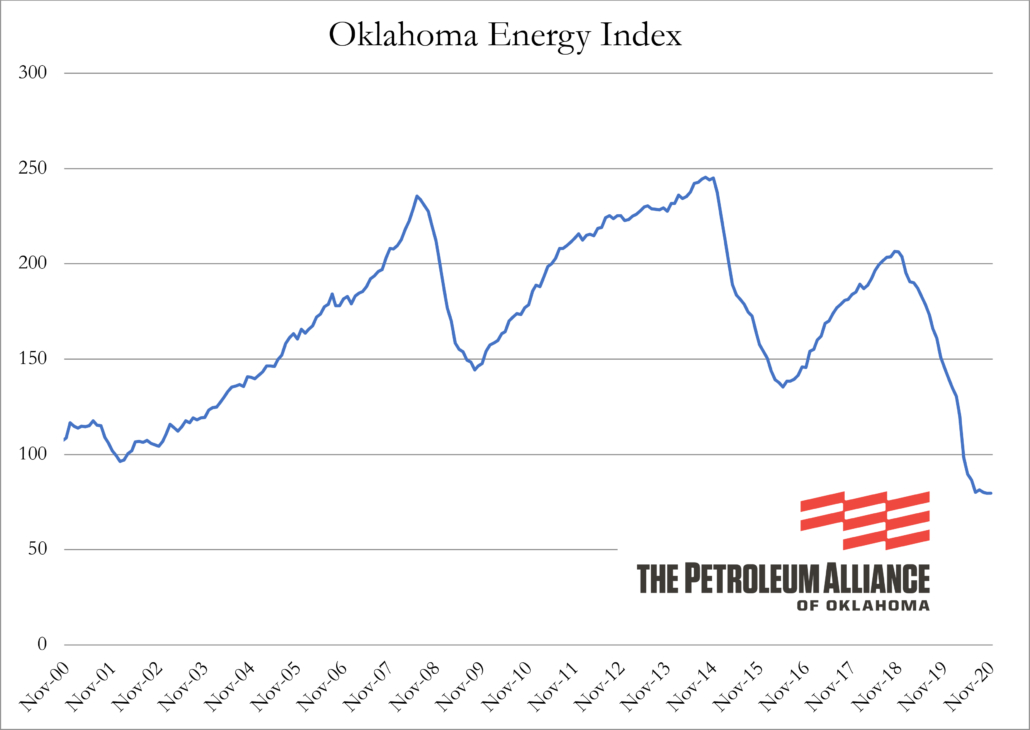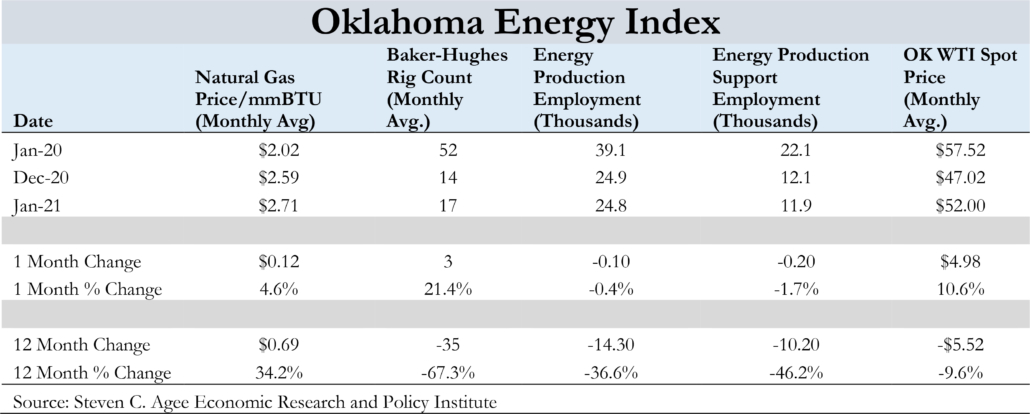Employment revisions highlight depth of industry downturn
[av_post_meta av_uid=’av-8xupd’]

Revisions by the U.S. Bureau of Labor Statistics show a worse-than-originally-feared position for employment in Oklahoma’s oil and natural gas industry.
Economist Russell Evans, who compiles the Oklahoma Energy Index (OEI), said employment estimates from the Bureau of Labor Statistics are subject to an annual revision based on more comprehensive filings of all employers included in unemployment insurance coverage in March. This year, revisions to Oklahoma oil and natural gas employment data were significant.
“The benchmark revisions suggest employment in the core of the industry is 7,000 fewer jobs than originally estimated, with the support side of the industry hardest hit,” said Evans, executive director of the Steven C. Agee Economic Research and Policy Institute. “This dramatic revision to the employment estimates in the drilling and support side of the industry is more consistent with the reality of the collapse in drilling activity than were the previously reported initial estimates.”
Despite the revised employment numbers, the most recent Energy Index shows oilfield activity in the state is improving. Increasing crude oil and natural gas prices have led to a small increase in the number of drilling rigs operating in the state, pushing the Index higher for the month. The Energy Index now stands at 82.8, an increase of 2.4% from the previous month but 38.6% less than one year ago.
The OEI is a comprehensive measure of the state’s oil and natural gas economy established to track industry growth rates and cycles in one of the country’s most active energy-producing states. The OEI is a joint project of The Petroleum Alliance of Oklahoma and the Steven C. Agee Economic Research and Policy Institute.
“While the revisions make clearer our past, they do little to change expectations of the future,” Evans said. “We continue to expect that the current cycle has found a bottom and it tracing out a recovery. We continue to expect the recovery to proceed slowly and modestly. And we continue to expect that the core employment in the sector is unlikely to return to either its 2014 peak (65,000 jobs) or 2018 peak (54,000 jobs) as the recovery unfolds.”
Petroleum Alliance President Brook A. Simmons said the slow march upward for Oklahoma’s defining industry offers a much-needed boost to the overall state economy. A vibrant oil and natural gas industry accounts for approximately one-fifth of all jobs in Oklahoma, and any increase in oilfield activity creates additional employment opportunities for Oklahomans.
“Oklahoma has a highly-specialized economy built on oil and natural gas,” Simmons said. “The petroleum industry and the men and women who make their living in it have struggled the past two years with decreased employment opportunities. As our industry recovers, we look forward to more Oklahomans returning to work with their earnings lifting the economy.”





